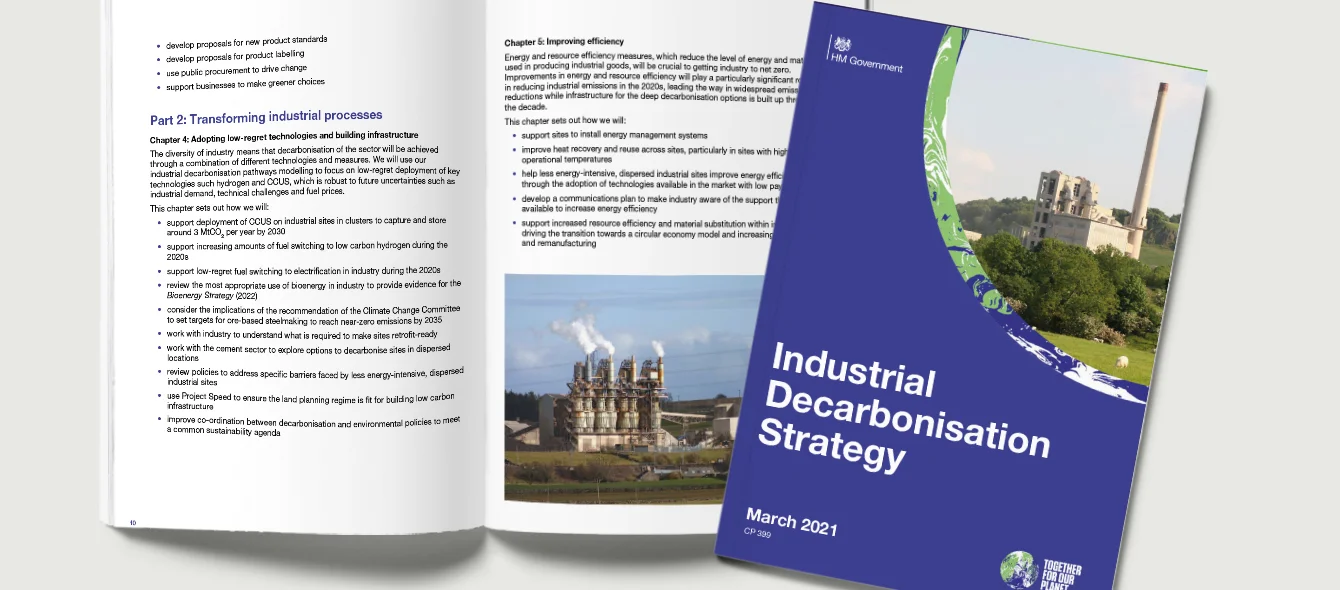In its Industrial Decarbonisation Strategy, published in March, the government estimates that UK industry will need to reduce emissions by two-thirds by 2035 and at least 90% by 2050, with the remainder at that time offset by negative emissions technologies, such as tree planting and the direct capture of CO2 from air. To achieve this a number of technologies are required, some of which remain at an early stage of development.
Renewable energy for the industry
The government says, by 2030, 3 Mt of CO2 needs to be caught through Carbon Capture, Utilisation and Storage (CCUS) and around 20 TWh of fossil fuel use replaced by low carbon alternatives. This latter goal is to be achieved through the use of hydrogen, bioenergy and electrification, using power generated from renewable energy sources. Increased renewable energy generation is central to the strategy. The government estimates that by 2050 the potential for switching to hydrogen, much of which would be produced from renewable energy sources, is around 24 TWh. In addition, electrification in industry could reduce emissions by as much as 5-12.3 Mt CO2 by 2050.
First steps on the road
The strategy begins this year with funding provided to industrial clusters for engineering studies and then a review of the design of the UK Emissions Trading System (ETS) to align it with the government’s net zero target. The cap on allowances in the UK ETS will be fully aligned with the 2050 net zero target by January 2024. The system is intended to provide a clear market signal for decarbonisation. In addition, the government says there must be a concerted effort to improve both energy and resource efficiency, if the net zero 2050 target is to be met.
Companies will start to receive funds for industrial energy transformation from the beginning of 2023. The aim here is to offset the costs of transition to keep UK industry competitive and avoid the risk of industry and emissions moving abroad, a possibility known as carbon leakage. To mitigate this risk, the government will initially provide free allowances for some industries under the UK ETS, employ climate diplomacy and consider how imports are treated from countries with weaker emissions policies.
At least one net-zero cluster in 2040
In 2023, the government will choose the location of the first CCUS projects, which will be the means of delivering 3 Mt CO2 of captured carbon by 2030. Two low carbon clusters will be established by 2025, with two more by 2030. At least one of these clusters is to become the world’s first net zero industrial cluster by 2040. The UK has six industrial clusters, which together account for about half of countrywide industrial emissions.
The government expects to play a key role in delivering large infrastructure projects, such as CCUS and hydrogen networks, where there are shared benefits but the risk or cost for the private sector are too great to bear alone. A range of funding mechanisms, such as the CCUS Infrastructure Fund and the Industrial Energy Transformation Fund, will be used to overcome barriers to securing private sector investment. Direct funding for carbon abatement projects is expected to decrease in the 2030s and into the 2040s as decarbonisation become more driven by private sector investment.
Photo credit: HM Government
